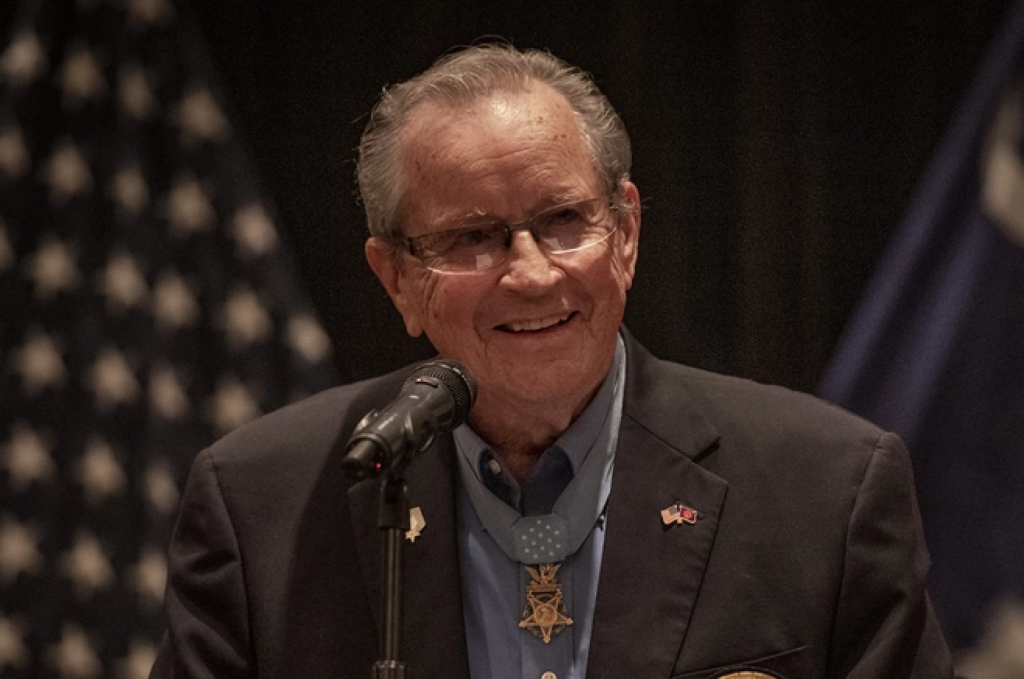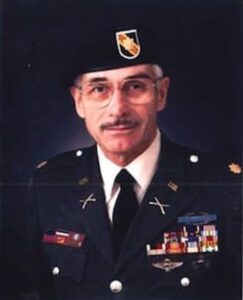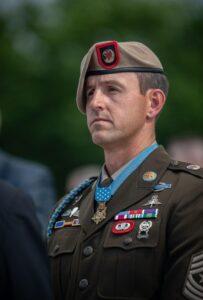Recipient: Patrick Brady
Branch: U.S. Army
Combat: Vietnam War
Value: Courage
Doing the right thing — without letting fears of hardship or danger derail us — is a daily act of courage. It requires us to confront reality head-on, accept responsibility, and use intelligence and compassion to do what is right.
On January 6, 1968, U.S. Army Major General Patrick Brady risked his life above and beyond the call of duty to bravely rescue 51 injured soldiers in Vietnam. His brazen exposure to enemy fire and thick fog made the mission seem impossible. Strengthened by courage, Maj. Gen. Brady did the right thing.
A Whirlwind Upbringing
Maj. General Patrick Brady was born on October 1, 1936, in Philip, South Dakota. As a boy, his family moved frequently, and he changed schools constantly. He briefly lived at Mrs. Smith’s boarding home; then he transferred to the Christian Brothers of Ireland boarding school. By his freshman year of high school, Maj. Gen. Brady had attended 10 schools.
Maj. Gen. Brady spent time living with his grandmother, then his mother and stepfather, and finally, his Aunt Irma. He and Aunt Irma formed a close connection and Maj. Gen. Brady says she saved his life.
At 16, he met Nancy, his future wife. The pair dated sporadically during high school. Maj. Gen. Brady decided to give up football to pursue Nancy at college, and they married while only sophomores. In the summers, he earned wages by working on the Alaska railway.
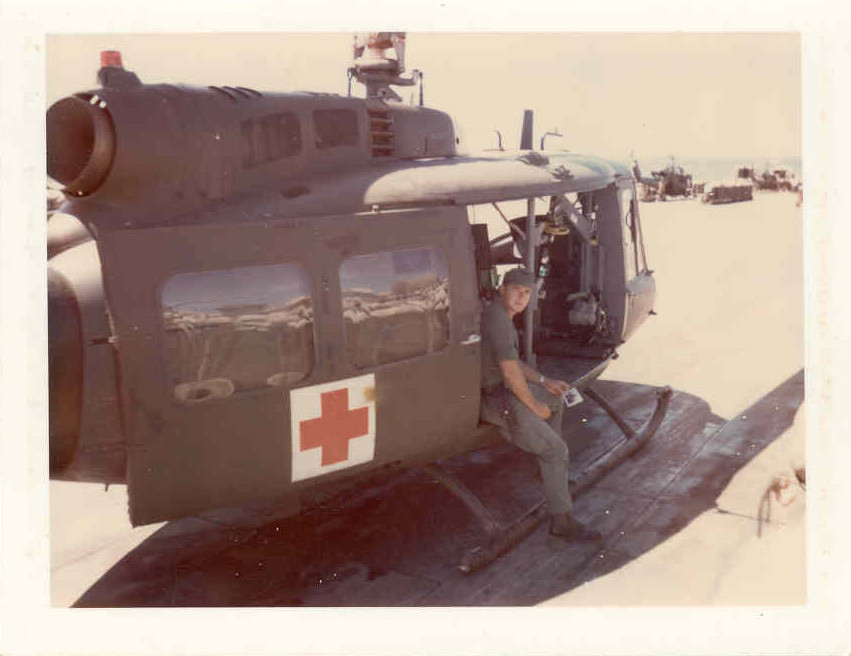
Taking Flight
After completing Seattle University’s ROTC program, Maj. Gen. Brady joined the U.S. Armed Forces in 1959. He attended U.S. Army helicopter school and earned his wings in 1963.
Shortly after, Maj. Gen. Brady received his assignment to the 57th Medical Detachment in Vietnam. He developed and practiced flying techniques to rescue patients in feeble weather conditions or when under fire.
He returned to the U.S. for his next assignment at Fort Benning, Georgia. Maj. Gen. Brady continued flying medical helicopters and trained for the 54th Medical Detachment. As a Dustoff pilot, he had his wife’s name, “Nancy Lee,” painted on his helicopter’s nose.
Courageous Medical Evacuations
In August 1967, Maj. Gen. Brady deployed to Vietnam again. Stationed in Chu Lai, Vietnam, the 54th Medical Detachment supported 500,000 people. Maj. Gen. Brady’s unit became experts in combat pickups during bad weather conditions, while under fire, and at night. These brand-new techniques transformed rescue missions.
On January 6, 1968, Maj. Gen. Brady volunteered for an impossible mission: to rescue wounded soldiers from a heavily defended enemy territory covered in dense fog. Despite the odds, he bravely and willingly entered combat.
Commanding a UH-1H ambulance helicopter, Maj. Gen. Brady carefully maneuvered through fog and smoke, slowly descending and hovering near a valley trail. Moving the helicopter sideways, he blew the fog away using the backwash from his rotor blades. He located the site, which yielded close-range enemy fire. He landed and successfully evacuated two critically wounded South Vietnamese soldiers.
“Just Another Day”
That same day, Maj. Gen. Brady made four successful trips to another fog-covered site where two aircraft were previously shot down. He rescued every wounded American soldier, despite being only 50 meters away from enemy lines.
On his third mission of the day, Maj. Gen. Brady again found himself surrounded. Nearby American ground forces were unable to reach and secure a landing zone because they were pinned down by enemy fire. Maj. Gen. Brady was in a predicament: his controls were partially shot away, and his aircraft had been damaged significantly during his first landing attempt. Yet wounded soldiers remained on the ground below, in danger of enemy fire. Acting quickly, he returned a second time, landing and rescuing the remaining injured soldiers.
Maj. Gen Brady had one final mission that fateful January day. After securing a replacement aircraft, Maj. Gen. Brady landed in an enemy minefield to rescue a platoon of trapped American soldiers. A mine detonated close to the helicopter, damaging the aircraft and wounding two crew members. Despite the harrowing danger, Maj. Gen. Brady flew six seriously injured patients to safety.
Using three aircraft, Maj. Gen. Brady rescued 51 severely wounded soldiers in one day. By the end of his shift, the helicopters had over 400 bullet holes. Without his tenacious acts of valor, many men would have perished from lack of medical treatment. Maj. Gen. Brady humbly says the day “was just like any other day,” except that someone recorded it.
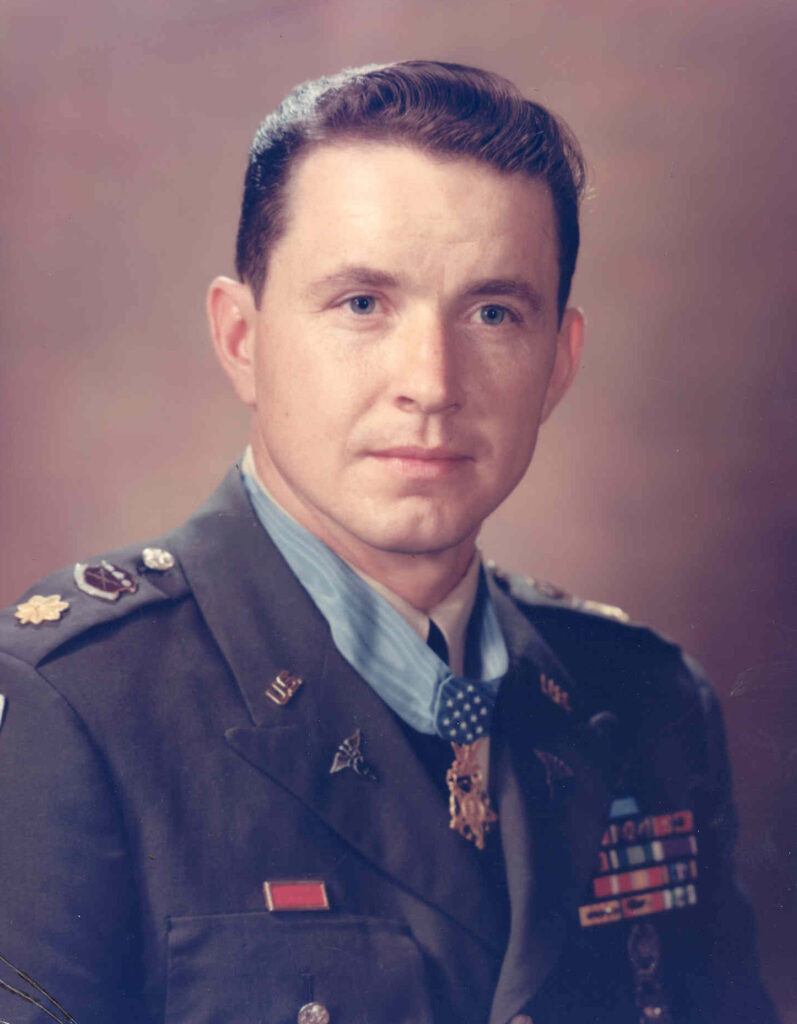
The Hero Within
Maj. Gen Brady flew more than 2,000 combat missions and rescued more than 5,000 critically injured troops in two tours of Vietnam. His story is a blueprint for doing the right thing, no matter the cost.
Each day, we can activate our inner hero and bravely face the world — one courageous decision at a time.
